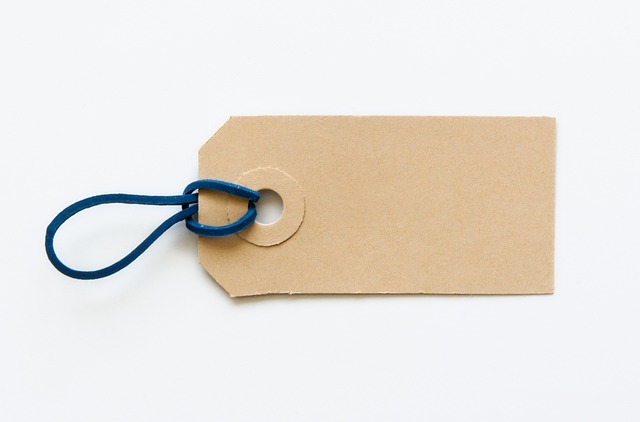Skin tags, medically known as acrochordons, are common soft growths caused by friction, hormones, or insulin resistance. While harmless, people often seek Leeds Tag Removal for cosmetic reasons. Safe home methods include OTC products and duct tape, but professional medical treatments like cryotherapy and laser offer higher success rates with minimal downtime and scarring risks. Misconceptions about immediate removal and home remedies persist; however, dermatologist-recommended procedures ensure safety and effectiveness. Proper aftercare is critical for healing and preventing infection or scarring after Leeds Tag Removal.
“Looking for effective yet safe skin tag removal practices? Skin tags, those harmless yet often unsightly growths, are common. This comprehensive guide explores the best approaches to eliminate them safely in Leeds. From understanding their causes and types to home remedies and medical treatments, we cover it all. We’ll also debunk common misconceptions and provide aftercare tips for optimal healing. By following these practices, you can bid farewell to skin tags with confidence.”
- Understanding Skin Tags: Causes and Types
- Safe Removal Methods at Home
- Medical Treatments for Tag Elimination
- Common Misconceptions About Skin Tag Safety
- Aftercare Tips for Effective Healing
Understanding Skin Tags: Causes and Types
Skin tags, also known as acrochordons, are small, soft skin growths that typically appear in areas where skin rubs against itself, such as the neck, armpits, or groin. They can vary in size, from a few millimetres to several centimetres, and often resemble small balls or tags attached to the skin. While they are generally harmless, many people choose to remove them for cosmetic reasons or because they find them irritating.
There are several types of skin tags, including hanging tags, which dangle from the skin, and warty tags, which have a rough, wart-like appearance. They can also vary in colour, ranging from skin tone to darker shades. The causes of skin tags are not entirely understood, but they are thought to be related to insulin resistance and increased levels of certain hormones. In some cases, they may run in families, suggesting a genetic predisposition. Leeds Tag Removal has become a popular search term as people seek safe and effective methods to address these growths.
Safe Removal Methods at Home
When considering Leeds Tag Removal, it’s crucial to understand that some methods can be safely performed at home, offering a cost-effective and convenient solution. One popular approach involves using over-the-counter (OTC) skin tag removal products. These typically contain ingredients like salicylic acid or lactic acid, which help to soften and eventually shed the skin tags. It’s important to follow the product instructions carefully and be patient, as results may take several weeks.
Another home remedy gaining traction is using duct tape. This method involves securing a piece of duct tape over the skin tag for several days, then gently removing it. The idea behind this technique is that the adhesion disrupts the skin tag’s blood supply, causing it to fall off. However, it’s essential to be gentle during removal to avoid bleeding or scarring. Always consult with a dermatologist if you have concerns or if home methods fail, as they can recommend safer and more effective professional treatments.
Medical Treatments for Tag Elimination
When it comes to medical treatments for skin tag elimination, there are several options available in Leeds Tag Removal services. One popular and effective method is cryotherapy, which involves freezing the tags with liquid nitrogen. This procedure is typically quick, painless, and can be performed in a doctor’s office. It’s a preferred choice due to its high success rate and minimal downtime.
Laser treatments are another advanced option for Leeds Tag Removal. These procedures use targeted laser light to destroy the skin tag tissue. Laser treatments may require multiple sessions and carry a slightly higher risk of scarring, but they offer precise results and can be effective for hard-to-reach or large tags. Always consult with a qualified dermatologist to determine the best course of action based on your specific needs.
Common Misconceptions About Skin Tag Safety
Many people hold onto misconceptions regarding skin tag safety, often due to a lack of accurate information or misguided advice from untrained sources. One common misconception is that all skin tags should be immediately removed for medical reasons. This isn’t always true; most skin tags are harmless and pose no significant health risks. They may even disappear on their own over time without any intervention.
Another false belief is that home remedies or over-the-counter products are the safest and most effective methods for Leeds Tag Removal. While some DIY solutions can be gentle, others can cause irritation, infection, or even more prominent tags. Professional medical removal procedures, like those offered by dermatologists, ensure safety with minimal side effects, making them a better option for persistent or unsightly skin tags.
Aftercare Tips for Effective Healing
After removing skin tags through a professional Leeds Tag Removal service, proper aftercare is crucial for effective healing and minimizing potential complications. It’s essential to keep the treated area clean and dry, avoiding any strenuous activities or direct sun exposure that could irritate the skin. Applying a cool compress several times a day can help reduce swelling and provide some relief.
Using gentle, fragrance-free moisturizers as recommended by your dermatologist can aid in keeping the skin hydrated and support the healing process. Be sure to follow all post-treatment instructions provided by your care provider to ensure optimal results and prevent infection or scarring.
When it comes to Leeds Tag Removal, understanding the best practices is essential for safe and effective elimination. By familiarizing yourself with different removal methods, both at-home and medical, you can make informed decisions tailored to your needs. Remember, proper aftercare is crucial for healing, so ensure you follow the recommended steps post-removal. With the right approach, safely removing skin tags is achievable, allowing you to enjoy a smooth, tag-free life.
